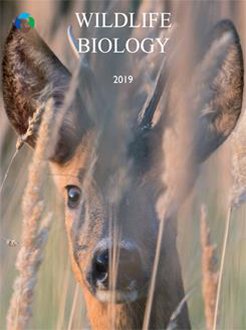Research and management programs of wild animal populations often require intensive field actions, which make direct interventions on animals such as capture, immobilization and manipulation, frequently necessary. Such events, however, could induce a stress response causing physiological and behavioural alterations in the individuals. Knowing the impact of these practices in the post-release phase is of crucial importance when studying the spatial behaviour of wild species. Our study aimed to investigate the potential effect of narcosis and application of GPS collars on 17 red deer Cervus elaphus hinds living in a mountainous area in northern Apennine, Italy. We conducted the analysis at a temporal scale of 45 days after release, in order to assess the response of animals in terms of changes in movement rates, distance from the barycentre of their positions and distance from the capture sites. We then compared habitat selection between the period of disturbance and the following days. This work represents the first study of the behavioural responses of wild red deer to capture and handling procedures. We showed that these operations significantly affect the spatial behaviour of hinds by inducing a short-term increase in movement rates and by keeping the animals away from the centre of their activity, for a period no longer than 10 days. The habitat selection analysis remarked a tendency to escape from human disturbance, by avoiding hunting sites and anthropized locations in favour of forest cover. Red deer hinds thus, seem to cope with stressful events and disturbance by adopting a flight behaviour, which includes moving away from the capture area and seeking refuges. The differences highlighted between the ‘stressful’ period and the following one, showed that such modifications persist for a limited time frame and suggested that this capture method is unlikely to lead to permanent alterations of behaviour.
How to translate text using browser tools
11 February 2019
Impact of capture and chemical immobilization on the spatial behaviour of red deer Cervus elaphus hinds
Valentina Becciolini,
Francesco Lanini,
Maria Paola Ponzetta

Wildlife Biology
Vol. 2019 • No. 1
2019
Vol. 2019 • No. 1
2019
disturbance
generalised additive mixed models
GPS telemetry
habitat selection
narcosis
ungulates





